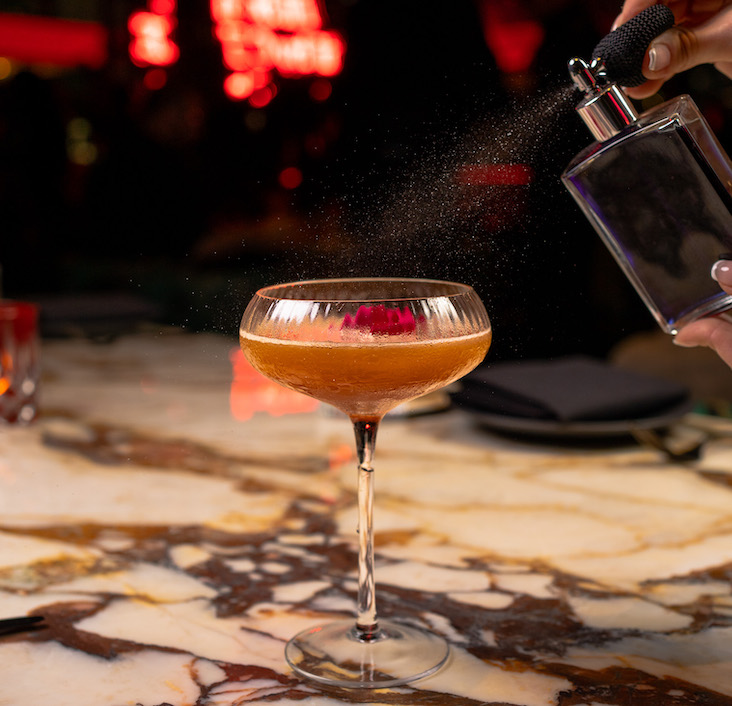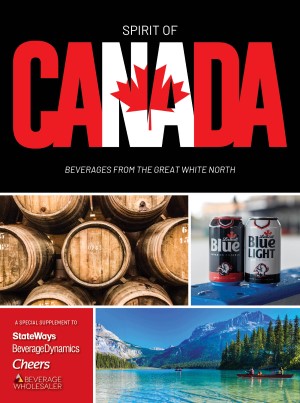Beyond chiantis and super-tuscans loom the three B’s barolo, barbaresco and the newly-crowned monarch, brunello.
photography by paul hilldebrand
It used to be–let’s say before 1980–that the barolos and barbarescos produced in Italy’s Piedmont region were the country’s most revered wines. These two wines, made from the persnickety nebbiolo grape, have for years sent fans into poetic raves and have yielded some great vintages, smelling and tasting as they do of pollen-rich carnations and violets, leather, tar and rich tannins. They still offer all the pleasures noted above and more, yet when talking of the three Italian Bs, brunello–the youthful contender from the Tuscan town of Montalcino–has wrested today’s Italian crown.
“Super tuscans–and brunellos; they’re what sell the most,” said David Maoine who, with his brother John, owns Campania, a very popular 40-seat restaurant in Waltham, MA. Out of Campania’s 160 wine choices, 16 are brunellos, with prices starting at $60 and vintages reaching back to 1968. Maoine religiously reads Italian wine magazines for news and recommendations, as much to keep up with his customers as anything else. “My customers read a lot and brunello shows up in lots of magazines, so people buy them. Personally, I think that barbaresco is more approachable and as far as barolo is concerned–it’s a strong wine. You can’t drink it every day.”
Brunello comes from the sangiovese grosso grape, making it a close relation to chianti. The Biondi-Santi winery is credited with its birth in the late 1800s, but the wine wasn’t widely developed until the late 1970s. That’s when the American-based Banfi bought property in Montalcino and, with new technology and an eye towards the American palate, paved the way for a contemporary brunello, a full-blooded, forward-fruit driven wine. While the Piemontese farmers held fast to their traditional ways, producing wines that are long-lived and slow to reveal themselves, they lost ground to brunello–a more modern and fiercely marketed wine. Barolos and barbarescos are still much adored, but there’s not doubt about it; when it comes to Italian wines, Americans are having a love affair with brunello.
Brunellos rule the list at Chicago’s cutting-edge Italian restaurant, Vivere, part of the Italian Village family.
Gerardo Bruno, co-owner of NYC’s San Pietro, worries that he and other restaurateurs have been so successful boosting the brunello boom that they might have helped create a monster. “If brunello is the most popular wine, it’s our fault.” Bruno lowers his voice, a bit tinged with guilt. “We let it happen because the most popular wine of the moment is the one we want to sell. I help customers with what they aren’t familiar with. If someone comes here and wants labels like Vietti, Conterno or a Gaja, they know what they want. But brunello? It sells itself. Few people in comparison are going for barbaresco or barolo; it’s all about marketing. People travel. They love Tuscany. Who goes to Piedmont? Personally, if you make me choose between a 1988 Barolo or a 1993 Brunello, I’d rather have the barolo or a well-knit barbaresco. Brunello is a marketing success, and marketing is essential.
“I remember in the ’70s when Santa Margherita pinot grigio came over, we were selling it at $12 a bottle, but no one would buy it. Then they started to advertise and the rest is history. People still buy it just because they recognize the name. This is the story of wine. This year the public prefers brunello, but next year, when people get tired of the crowds in Tuscany and start to visit the Piemontese, they’ll drink barolos and barbarescos.”
busy B’s
Brunello’s popularity is also strong at the three restaurant concepts operating under the roof of Chicago’s Italian Village–the fish-oriented and informal La Cantina, the elegantly cutting-edge Vivere, and the hearty, red sauce and checked-tablecloth Village–where a 4,000 bottle, award-winning wine list does triple duty for all.
Of that inventory, 65% of the wines are reds, and while big reds are not what most customers want with a piece of Dover sole over at La Cantina, they do sell very well at the other two restaurants.
Out of all of these three wines, brunellos register number one in sales. But wine manager Bob Rodine says that as the prices of brunello climb out of sight, sales are being lost to the growing number of big-style chiantis. “All of a sudden,” he says, “a great chianti at $40 looks a hell of a lot better than a $90 brunello.”
Whether it’s a barolo, brunello or barbaresco, Rodine doesn’t buy any wine with a life-expectancy of less than five years, so he tends to walk away from the less important vintages when they emerge. Easier drinking wines, often bargains, end up on a shorter, two-page list of 100 “current selections.” This capsule list, priced to move, keeps bargain wines in the customer’s vision. This is also where Rodine can take advantage of a good wine in an off-year and move it quickly. “We don’t mark things up three times like other people do. We’d rather see the second bottle purchase than gouging on one.”
Overall, barbarescos sell over barolos at the three operations, where the customer perceives it as better value. The bulk places on the list between $60 and $70. Rodine says that the wines of Gaja, the preeminent barbaresco producer, sell slowly, usually when someone in a party of wine drinkers tries to impress the table. The workhorse barbarescos from Produttori, given the stellar ’90 vintage, seem attractive at $62.50 for the ’90 Porro Reserve or the Rabaja at $70. “We do very well with Produttori and in the ’95 vintage we are getting all we can get our hands on.”
mellow brunello
In Midtown Manhattan’s Ristorante San Pietro, where price is usually no object, a $90 bottle of brunello looks good to many of the well-heeled customers, as does a $250 Bruno Giacosa Barbaresco or $550 bottle of the statusy 1988 Sperss from Gaja. Nevertheless, last winter starting in November they went though between five and six cases of brunellos at all prices each month–representing more case sales than barolo or barbaresco.
San Pietro, of course, has an extensive, primarily Italian list which includes a vast selection from the Bruno’s home region, Campania, as well as 55 brunellos, 37 barolos and 20 barbarescos. The brothers Bruno, San Pietro’s owners, say that an essential aspect of keeping their list a wine lover’s destination is frequent trips to Italy to maintain relationships with their favorite growers. These personal relationships insure that they get the vintages and the quantity they need, important in these wine-allocated days.
For San Pietro and other operations, vintage is extremely important and so buying before the wines are released is a major part of the game. The Brunos, like Bob Rodine and others with important lists and storage space, have already bought their ’95s and most of their ’97s–a vintage which supposedly will surpass the great ’90s.
Because San Pietro has a superior selection of labels and vintages, they have the luxury of promoting what they want to sell, meaning they can push the wines that are drinking particularly well and cellar the rest. This leaves them a solid selection of the 1990s to be listed but enough left to stock in their cellar, giving the wines time to come to their optimum drinking pleasure. Right now they are strongly behind their ’91s, and they believe the ’93 should stay in the bottle for a few more years. Another payoff is being able to weather the bad years when they buy next to no wine. “We started collecting in 1984,” Gerardo says, “and because the wines were good and inexpensive we bought heavily. It’s a good thing, too, because I wouldn’t wish a ’94 barolo on anyone.”
San Pietro focuses on the food of Campania in Italy’s south. Northern Italian restaurants, like Washington, DC’s Gallileo, are situated to sell even more of these northern wines. Wine manger Enzo Forgione agrees heartily with Gerado Bruno, but puts this spin on it. “Americans prefer the fruitier, more forward, California-tasting brunello, but Italians would rather drink Piedmonte wines. What Americans don’t know is that you can get a better barolo for $40 than a $40 bottle of brunello.”
Gallileo stocks 400 barolos dating back to 1937, and prices start at $45 and head far north. They sell better than brunellos, but at this kind of restaurant, that’s to be expected. This is barolo central and the owners are presently creating a much-anticipated barolo list for their new restaurant, Barolo.
B sharp
While a round and velvety brunello can be enjoyed even without food, wines from the nebbiolo grape are heavier, arguably more complex and likely to thrive when paired with food. Barbaresco is a slightly younger and softer example of what barolo can be, while the nature of a barolo, once called “king of wines, wine of kings” in Italy, is meant to possess strong acids and tannins–both brilliantly tamed by age. Many in Piedmont cling, some say wisely, to this style, resisting methods that will strip the noble wine of its power.
So, it seems if you’re a swank northern Italian or your restaurant’s name happens to be Barolo, you’ll probably do fine on the nebbiolos, but any international or Italian list demands a strong showing from all three “Big B’s.” But if barolo and barbaresco aren’t currently that popular, you may wonder, why bother?
Well, for one thing, the stellar ’95 and ’97 vintages are upon us, while the best of the ’97s won’t be released until the year 2001. So, you just might be caught short if you don’t buy now, as few will be available in the near future. And who knows? The Piemonte region might start an advertising campaign and put nebbiolo back on the map, and we might be seeing more of the other great wines made from nebbiolos, like gattinara, ghemmes or the closely retalted spannas–fine wines that only have a ghostly presence today. As Gerado Bruno said, “Today brunello, tomorrow barbaresco and barolo.” Stranger things have happened.




